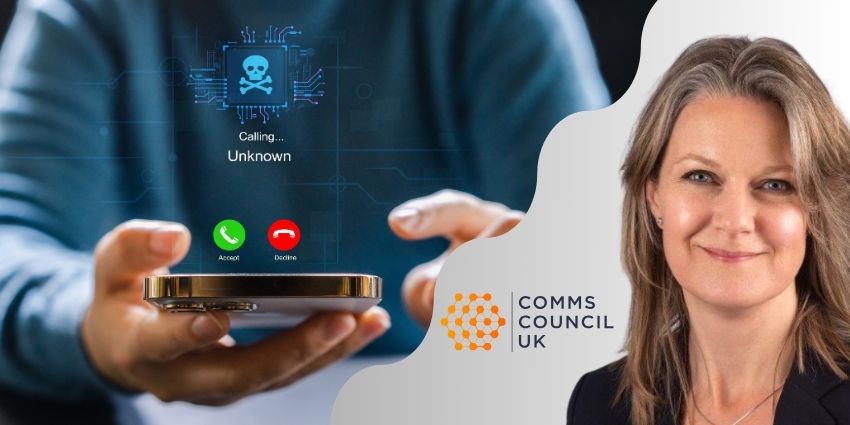In an era where smartphones serve as our primary communication devices, a sinister trend has emerged that threatens the very foundation of voice communication.
The proliferation of scam calls and fraudulent SMS messages has reached unprecedented levels, leaving consumers wary of answering unrecognized numbers and creating significant challenges for legitimate businesses trying to reach their customers.
This growing aversion to taking calls represents a growing problem for businesses trying to reach customers: they can’t connect, literally.
For anyone who has ever tried sales, you know that getting someone onboard won’t work with a voicemail—and that’s if the person even listens to it.
Thus, this fundamental breakdown in trust in one of our most essential communication channels, voice calls, represents a huge problem for business prospects.
But what exactly are businesses dealing with, and how can they cut through the noise to confidently reach their customers? To find out more, UC Today spoke with Tracey Wright, Chair of Comms Council UK (CCUK).
Why Phone Scams Are Surging
The dramatic rise in phone-based fraud can be attributed to several converging factors.
“There are multiple factors at play here,” Wright explained. “Firstly, great progress has been made in reducing the rate of other types of fraudulent activity, such as via mail, meaning that scammers have adapted their behavior.”
This adaptive behavior highlights how fraud, like water, tends to follow the path of least resistance. As traditional avenues close, scammers have simply redirected their efforts toward more vulnerable channels.
Equally, technology has played a significant role in this shift.
“Advancing technologies mean that fraudsters have been able to broaden their geographical and technological reach, all at a lower cost,”
Wright noted. ”
The shift to digital calls has made it much easier for scammers to manipulate call data, which in turn makes it far simpler to impersonate someone else.”
This technological evolution has coincided with our increased dependence on mobile devices, creating a bigger market for fraudsters as mobiles are now more popular than desktops. Thus, the method of deploying scams has adapted to more mobile-associated activities.
As Wright explained, “These are some of the richest engagement channels for bad actors to reach their audience, as the genesis of a fraud or scam is no different from a cleverly constructed marketing campaign.”
Such is the prevalence of scam calls that, already by 2020, the think tank Pew Research Center found 80 percent of Americans don’t generally answer their phone when an unknown number calls.
Indeed, the US government agency, the FCC, has issued official advice to consumers, telling them not to answer calls from unknown numbers and that if you do answer a call, you should “hang up immediately.”
The Hidden Business Impact
The growing prevalence of scam calls isn’t just concerning for consumers—it poses a significant threat to VoIP providers and legitimate businesses that rely on phone communication to reach customers.
“Trust is a big issue,” Wright explained.
“We hear time and time again that consumers are no longer answering calls as they have lost confidence in this method of communication. If people aren’t taking calls, genuine people stop making them—and that is bad for our industry, bad for consumers, and the business economy in general.”
This erosion of trust creates a vicious cycle. As consumers receive more fraudulent calls, they become less likely to answer unrecognized numbers.
This decreased engagement makes phone communication less effective for legitimate businesses.
Equally, Wright fears the shift may drive businesses from voice to other communication channels.
“Distrust in voice and messaging services may also drive customers away from regulated communications services to alternative communication services and social platforms,” Wright explained.
Omnichannel capabilities are becoming a big selling point for many UC providers. Alongside a changing user preference in how consumers prefer to communicate, channels like WhatsApp allow companies to create business pages with branding to assure customers they are talking to official channels.
Yet, Wright highlights how this may be shifting from one issue to another.
“These other channels lack consumer and regulatory protection, paradoxically placing them at greater potential risk,” Wright warned.
Protecting Legitimate Communications
For VoIP providers, this situation presents unique challenges.
“Fighting fraud is a huge priority for VoIP providers,” Wright explained.
Despite these challenges, there are effective strategies that VoIP providers can implement to distinguish legitimate communications from fraudulent ones, helping ensure their users can still reach customers effectively.
“There are already a number of measures that providers can implement,” Wright explained, “such as checking the ‘do not originate’ list and strengthening Know Your Customer (KYC) controls on their customers and upstream providers for number allocation and reselling.”
These measures help ensure that call originators have the legitimate right to present themselves using specific numbers, such as customer support lines.
By confirming the right of use for phone numbers, providers can help prevent impersonation and spoofing—two of the most common tactics used by scammers.
Impersonation scams are when someone appears as a bank or trusted institution to lead someone into an Authorized Push Payment (APP) scam.
Spoofing involves a fraudster simply choosing a random number to display as their caller ID.
“VoIP providers are also well placed to integrate with trusted calling technologies becoming available on mobile networks, exposing those assured trust signals directly to users on their mobile handsets,”
Wright said.
Trust signals are features such as network-based caller ID authentication using frameworks, which verify the caller’s identity and display a “Verified Caller” badge on users’ handsets.
These signals can also include verified enterprise branding that shows certified business names or logos during calls, providing clear assurance of legitimacy.
Additionally, contextual call purpose previews—such as validated appointment reminders—real-time encryption indicators, and carrier-validated reputation scores can further reinforce trust.
By exposing these verified attributes directly on caller displays, users receive immediate visual confirmation that a call is legitimate, helping to combat spoofing and scam calls.
These features, however, may require VoIP providers to adopt standardized and new authentication protocols, share trust data with carriers via APIs, and support unified display standards across devices.
Yet, Wright insists that they should.
“VoIP providers need to embrace these initiatives,” Wright said, “which we recognize have to be developed in a sustainable and cost-effective way, so they become part of the solution and not just part of the problem.”
Such trust signals can help consumers quickly identify legitimate calls, increasing the likelihood that they’ll be answered.
Tackling Scam, Restoring Trust
As technology continues to evolve, so too will the methods used by scammers.
AI and other advanced technologies are already being deployed to make fraudulent communications more convincing and harder to detect.
“Our industry is under significant pressure to tackle fraud, but this is a huge challenge and one that cannot be tackled by the telecoms sector alone,”
Wright explained.
Collaboration between stakeholders will be essential to address these evolving challenges effectively.
“At CCUK’s Fraud Summit in early March, we called upon the Government, the regulators, and other sectors to come together to help us improve data sharing so that the telecoms industry can act faster to detect, prevent, and report fraudulent activity,” Wright explained.
“This requires information to flow in all directions, and work is already underway to build a framework to facilitate that.”
While phone-based fraud isn’t going away—and may indeed accelerate with the advent of AI and other technologies—proactive measures can help legitimate businesses ensure their communications remain effective and trusted.
By embracing industry initiatives and implementing robust verification processes, VoIP providers can help shape the future solution to an issue affecting their customers.
Posts from the uctoday
community on Reddit







